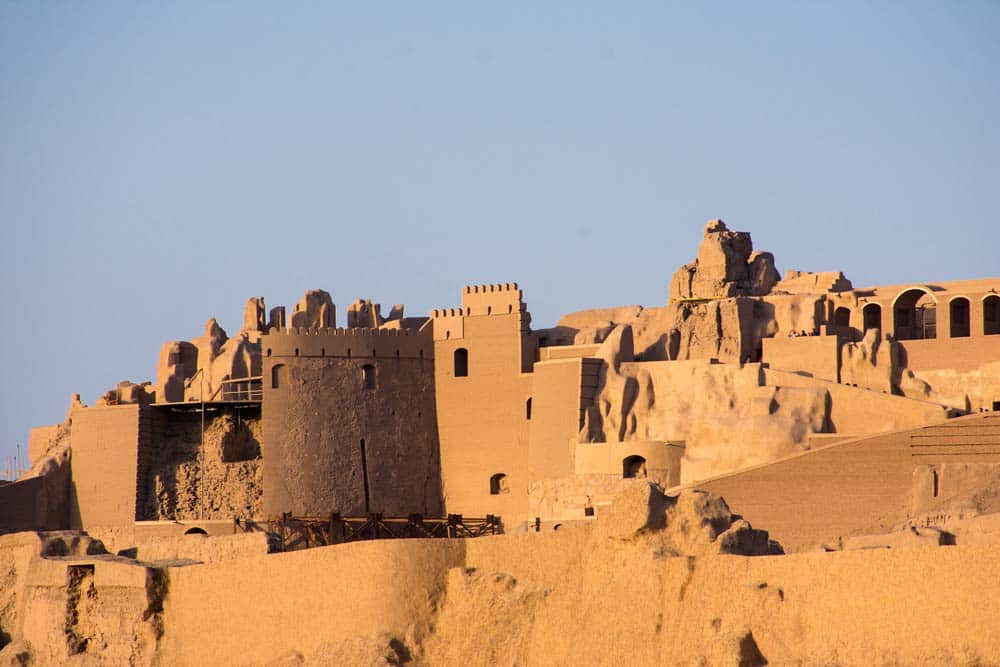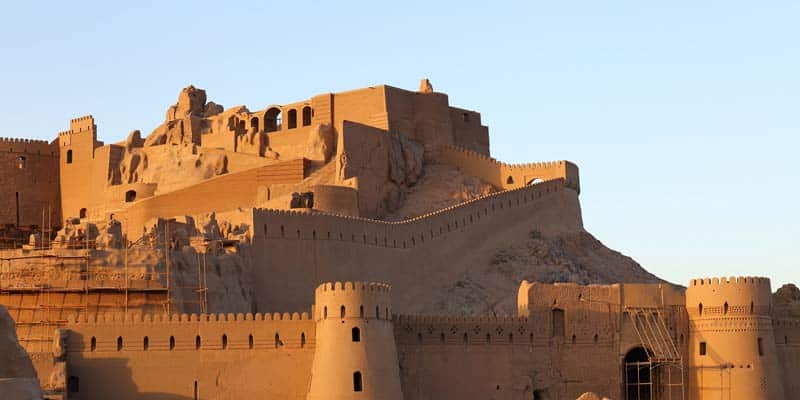In the early centuries, Bam was the second most important city of Kerman and was an important Centre for trade with the provinces of Sistan and Khorasan. Bam is located 220 km southeast of Kerman, it stands at an altitude of 1062 m. bam enjoys the benefits of two very extreme altitudes. There is the mountainous area, which is provided by a continuation of the central mountain ranges from Iran.
Cities do not die after being abandoned. They are alive even when the earthquake ruins them. When on December 26, 2003; an earthquake killed almost a generation of the bam it was thought that the 2000-year-old history of the man had also been buried under the debris.
Bam, the world’s largest brick structure, is still alive.
Nevertheless, the fact is that the world’s largest complex made of sun-dried bricks is still alive and it is one of the best hosts for tourists.
Arg-e Bam (Bam citadel) with an area of 20 hectares and 492 hectares of cultural landscape is located on the eastern north of Bam and at the foot of an enormous rock; it was once the old city of Bam. The old Bam consists of 4 parts and 38 watchtowers. The main materials of the castle were adobe, clay, and chaff. It is by UNESCO as part of the World Heritage site “Bam and its cultural landscape”. This enormous citadel on the Silk Road was built before 500 BC and remained in use until 1850 AD. It is not known for certain why it was then abandoned. The 2003 Earthquake in Bam destroyed more than 80 percent of the citadel. As a World Heritage site, several countries are cooperating in the reconstruction and after comprehensive research, the authorities announced that the citadel would be rebuilt.
According to Mr.Naderi, a member of the board of the rebuilding of the Bam, the earthquake destroyed almost all the entries of the Arg, and the most important procedure at the time was to open these entries for the medics and apparatus to help the wounded people. However, this cleanup was not an industrial one, the topographers, archaeologists, architects, and reconstruction groups were the first groups to appear there.
They codified every part of the stricken citadel and then the archaeologists and reconstruction groups began the cleanup procedure and at the same time all the necessary and protective actions had proceeded to reinforce the remaining of the citadel with buttress. Barracks of the old citadel and Mirza Na’im school were the only sites that have not been destroyed completely.
It is believed that their symmetrical construction strengthens them against earthquakes.
It is believed that their symmetrical construction strengthens them against earthquake.

Citadel Design & Architecture
One of the characteristics of this historical complex is the continuation of history in it. Over 2000 years have passed over this citadel and several monuments from prehistoric times to the Islamic era have been discovered in it.
Its founder is Bahman the son of Esfandyar. Since various Archeological research has been done about it, so there is no correct information about its exact date of establishment.
One of the studies about the citadel has been done by Mr.Nurbakhsh and his colleagues and is published before the Islamic revolution in a book under the name of “Arg-e bam”. According to this, the building of the citadel and the ancient city of Bam belong to the middle period of Ashkanis.
Bam complex consists of:
The main gateway
Bazaar
Tekeh Square
The Large Mosque of Arg
Mirza Na’im Momplex
Armory
Wind Mill
Ruler House
The Main Well of the Citadel
The Remain of Old Fence
Kenari Mahale
Kat Korom Gateway
Jail
There were two other historical buildings in Bam and near Bam that their historical importance had not yet been recognized well and one of them was completely unknown.
As you pass the gate, you step into a silent city. However, with the help of your imagination, you can still hear the sounds of life-the sounds of people in the streets, houses, and commerce buildings-for the echo is forever preserved in Bam’s clay building.


